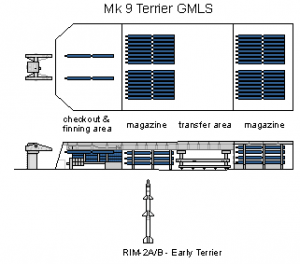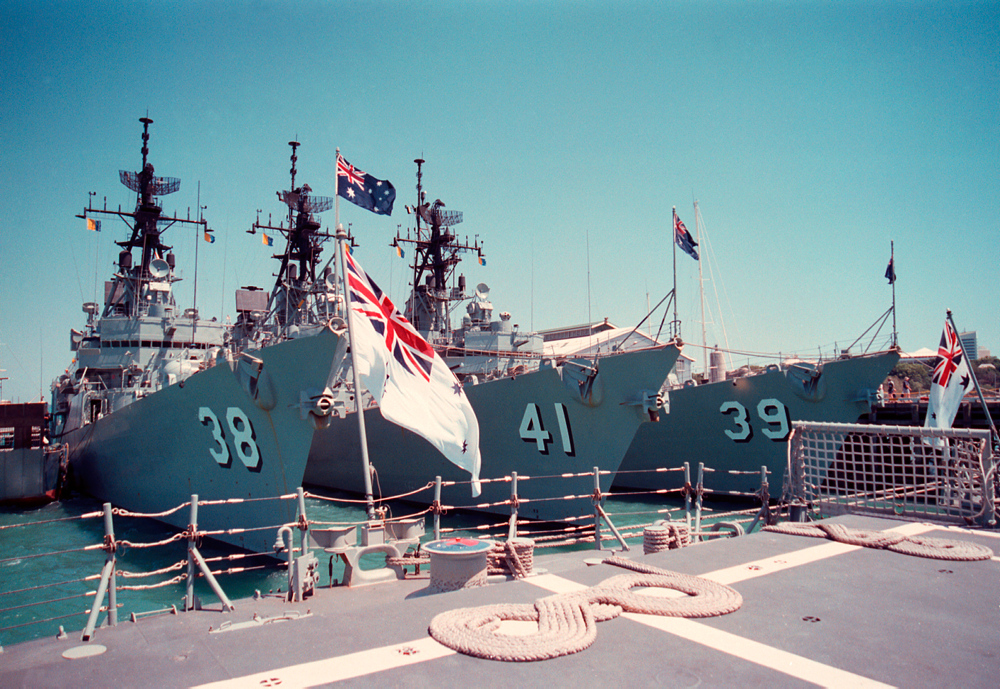Interesting topic, thank you.
I find the County Class particularly interesting as a family friend who served on and loved the Perth (Adams) Class DDGs, made the point that the RAN would have been far better served by a modified County design. My apologies if I drift too far off topic.
Reading through a number of points caught my attention, and reminded me of other readings I have done on the subject :
- Seaslug MkI was comparable (if not superior) to earlier variants of Terrier.
- Seaslug MkII was inferior to late model Terrier and Standard SM-1, but was necessary as the RN needed the additional ships but nothing else practicable (palatable) was available.
- A number of European Navies concurrently operated converted and new build ships with Terrier (or equivalent), with converted and new build ships with Tartar.
- Seadart was superior to Standard SM-1 but not SM-2 (not really comparable as it was only available on AEGIS platforms until the advent of NTU in the mid/late 80s)
- 10 Counties were planned, 4 Batch 1, and 2 + 2 Batch 2 were completed, with orders being placed for pairs in 1956, 57, 61 and 65.
- The 7th and 8th Counties were delayed and the 9th and 10th were cancelled because the RN expected to be ordering Escort Cruisers
- The Escort Cruisers are not ordered and the RN ended up converting Tiger class cruisers instead (not satisfactory as lower helo capacity, no area air defence capability, large crew)
Then there is the RAN interest in a Tartar armed County:
- The RAN had a totally unrealistic expectation that a steam only, Tartar armed derivative of the County could also carry 3 Wessex, with a displacement of 4000tons.
- The RN informed them this was not possible and recommended they adopt the standard County design, or wait for the Escort Cruiser that actually better suited their requirements
- The RANs preference for Tartar has been reported to relate to the poor performance of Seaslug in trials at Woomera, also planned to fit Tartar to Battle and Daring Class destroyers
- The RN said they did not have the design capacity to develop a Tartar County with improved aviation facilities, private yards said they did.
Piecing this all together, the Batch 1 Counties and Seaslug Mk I make perfect sense, even qualify as good value, but the Batch 2 and Seaslug MkII less so. It really is too bad the RN didn't compromise with the RAN and meet them halfway with a Tartar County redesign. Basic hull and machinery design retained, SeaSlug deleted, Mk 13 GMLS in place of B turret, helicopter deck extended aft, hangar redesigned for three Wessex or two SeaKing (maybe three SeaKing), Seacat (if retained) moved to hangar roof. Seaslug magazine repurposed for aviation stores, fuel etc. Maybe even look at an RAN style Ikara installation aft of the helo deck. The RN could order four to six Tartar Counties instead of the Batch II Counties and the Tiger conversions (sell the Tigers to ABC instead). Best of all, by the time these ships are ordered the RN would have an idea of the dimensions and integration requirements of the future Seadart system and have completed the Tartar County redesign with the facility (for the design, not necessarily the already built ships) to be easily adapted to Seadart.
Perhaps with the money, time and effort saved by stopping the original Seaslug Mk II development, resources could be applied to developing meaningful improvements to Seaslug Mk1 that could be retrofitted to the Batch 1 ships.



